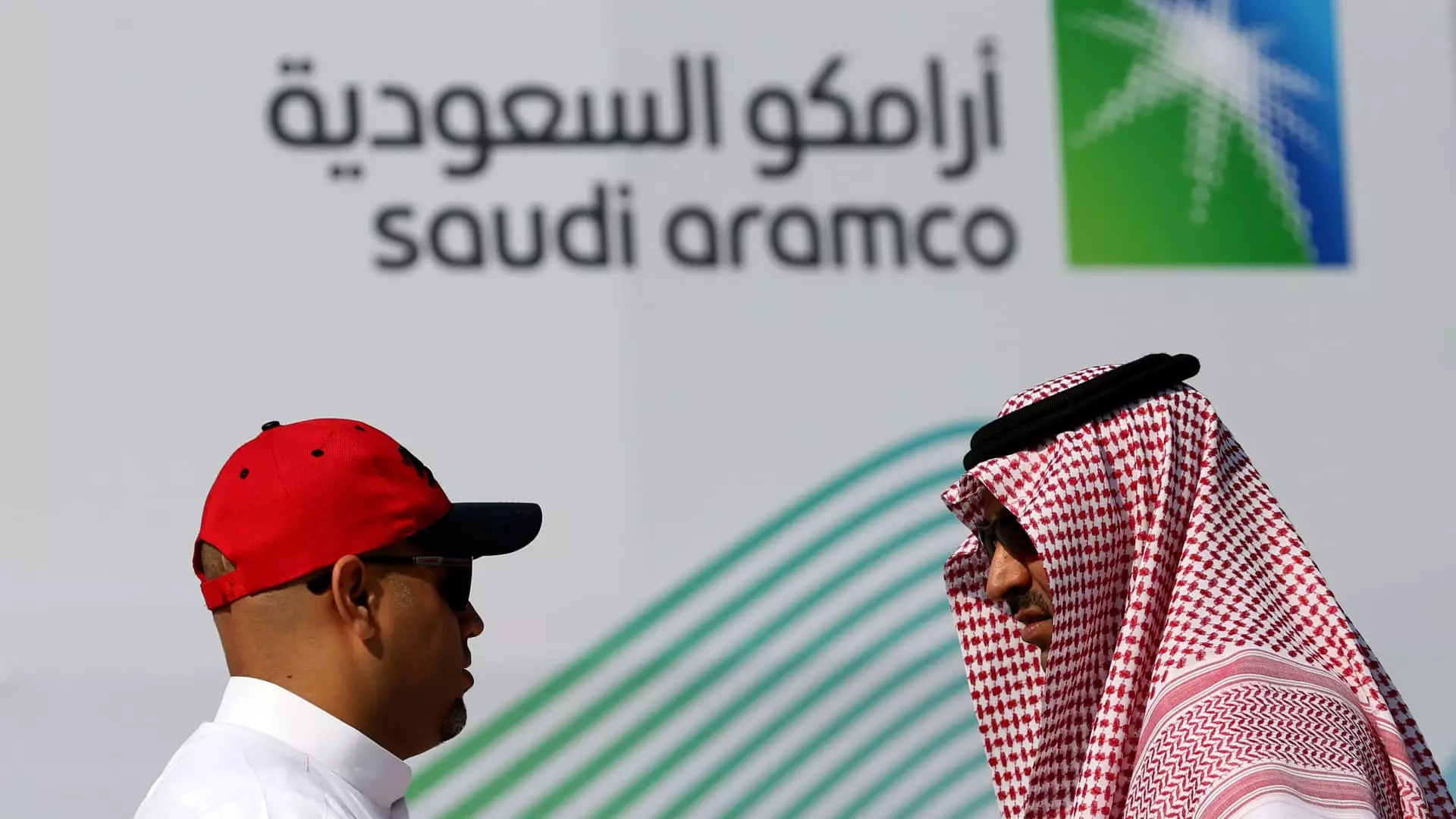In the world of oil, few names resonate like Saudi Aramco. Once the proud piñata of riches for the Saudi government, the company recently reported a troubling 5% decline in net profit for the first quarter of 2025, dropping to $26 billion from a robust $27.3 billion the previous year. This decline is emblematic of far more than just the company’s operations; it signals a seismic shift in a complex landscape dominated by fluctuating oil prices and global economic uncertainty. While analysts had estimated net income would plummet even lower, hitting around $25.3 billion, the fact remains: Aramco’s glory days appear to be waning.
One of the many striking revelations from Aramco’s recent earnings report is the significant dip in free cash flow, which fell from $22.8 billion in Q1 of 2024 to a sobering $19.2 billion this year. This decline in cash generation raises a myriad of questions about the company’s ability to weather ongoing market instability. Operating cash flow similarly fell from $33.6 billion last year to $31.7 billion, revealing a deeper malaise within the core structure of Saudi Arabia’s oil behemoth.
Dividends and Dilemmas
A hallmark of Aramco’s appeal has always been its dividend payouts, which serve as the financial lifeblood for both the company and the Saudi government. However, recent strategic choices raise serious concerns. Just during the first quarter of 2025, Aramco announced yet another crippling cut to performance-linked dividends, slashing it from an impressive $10.2 billion to a mere $200 million. While the base dividend for this period did increase modestly by 4.2% to $21.1 billion, the raw total fell strikingly from $31 billion last year to $21.36 billion this year. This drastic adjustment sends ripples not just through Aramco’s financials but also throughout the Kingdom’s already stretched budget.
CEO Amin Nasser attempted to paint an optimistic picture, asserting that the company’s “robust financial performance” underlines its reliability and its low-cost operations. However, there’s a pervasive cloud of skepticism among analysts and investors regarding this stability. As pressure mounts on Aramco’s finances, the implications stretch far beyond the corporate realm and into the very fabric of the Saudi economy, which is already overwhelmed with deficits and burgeoning debt.
The kingdom has been in a precarious position, committed to bold megaprojects while navigating the choppy waters of dwindling oil revenues. With oil prices failing to stabilize and tumbling below the needed threshold to balance the budget—estimated by the International Monetary Fund to be above $90 per barrel—the ramifications are dire. Goldman Sachs’ predictions for a crippling budget deficit, reaching upwards of $75 billion if oil prices hover around $62 a barrel, paint a bleak financial picture for Saudi Arabia.
Global Energy Dynamics and Saudi Oil Policy
Aramco’s challenges spill over into the broader global energy landscape. The company’s operating procedures—tightened by OPEC+ production cuts to stabilize oil prices—have now found themselves at odds with a rapidly changing market reality. In April, the Kingdom and its allies made a shocking announcement to speed up production increases, stirring fears of a supply glut even as economic pressure mounts globally. With analysts predicting increased production targets and further extensive cuts, the volatility of the oil market leaves Aramco in a bewildering state.
Insightful voices, including those from major financial institutions like Morgan Stanley and Goldman Sachs, reveal their downsized forecasts for oil prices, now estimating prices to fall below $63 per barrel through 2026. This is more than a mere statistic; it suggests that the global energy market is undergoing transformation, one that could offer long-term challenges for Aramco. The swift decline in oil price projections indicates an evolving global demand, reviving the age-old fears of oversupply and waning competitive advantage.
Forward-Looking Challenges and Economic Implications
The future is rife with challenges for Saudi Aramco and the Kingdom’s economy at large. There’s an undeniable correlation between these declining fortunes and the broader socio-economic conditions impacting Saudi Arabia. As the contributions from oil revenues diminish, the government may resort to harsher budget cuts, heightened borrowing, and even the sale of valuable assets—all of which will have lasting effects on the Kingdom’s ability to sustain its ambitious vision of modernization and reform.
In a reality where public sentiment shifts quickly and economically-driven social contracts begin to unravel, this could lead to a state of unrest that the already conservative society lies unprepared to handle. The urgency to diversify the economy is palpable; however, questions linger regarding just how quickly that transition can occur in the wake of faltering oil prices and the looming prospect of a discontented populace, fueled by economic hardship.
Ultimately, Saudi Aramco’s current predicament serves as a stark reminder that even the mightiest giants are not impervious to market forces and the relentless march of change.

